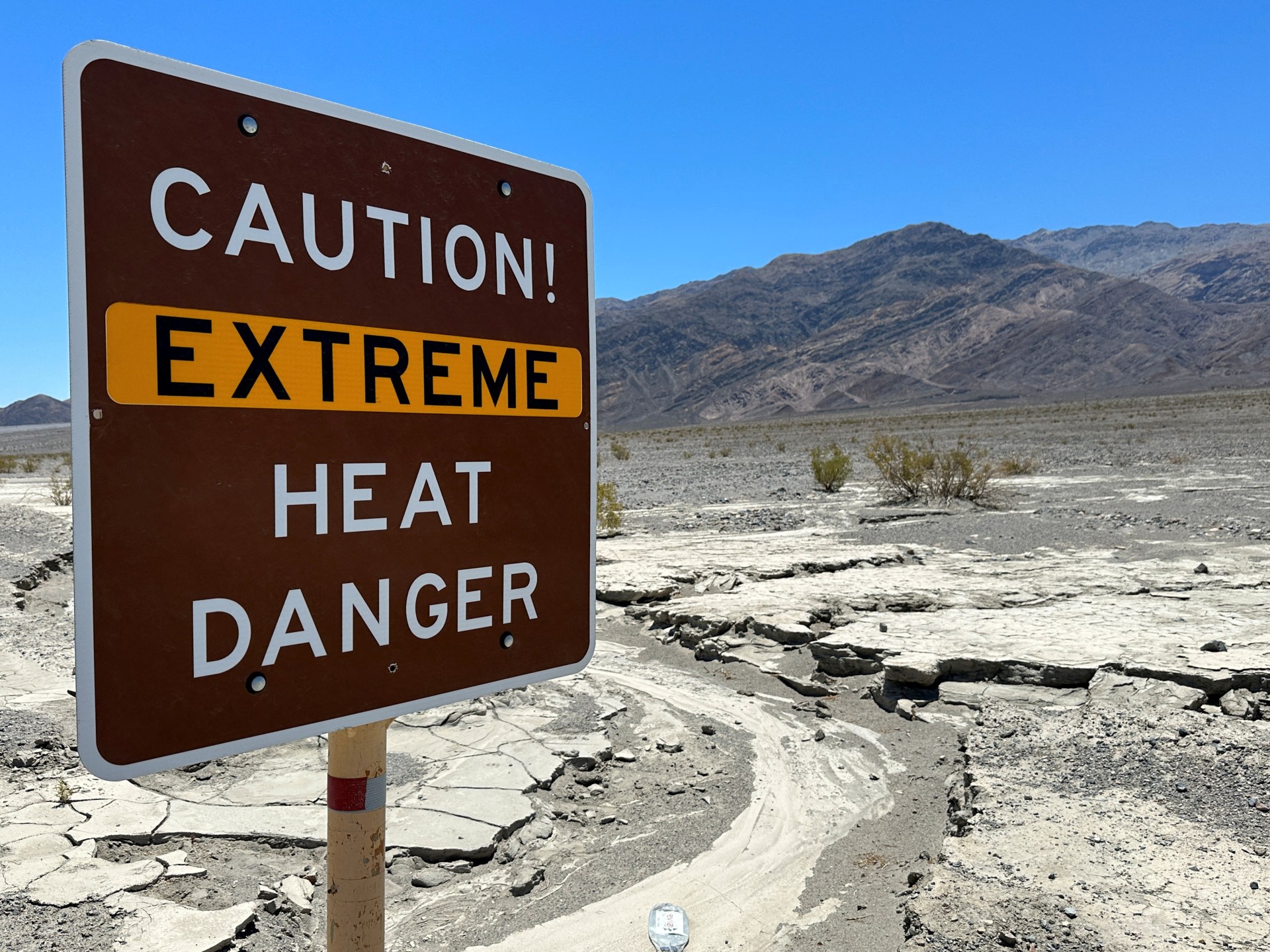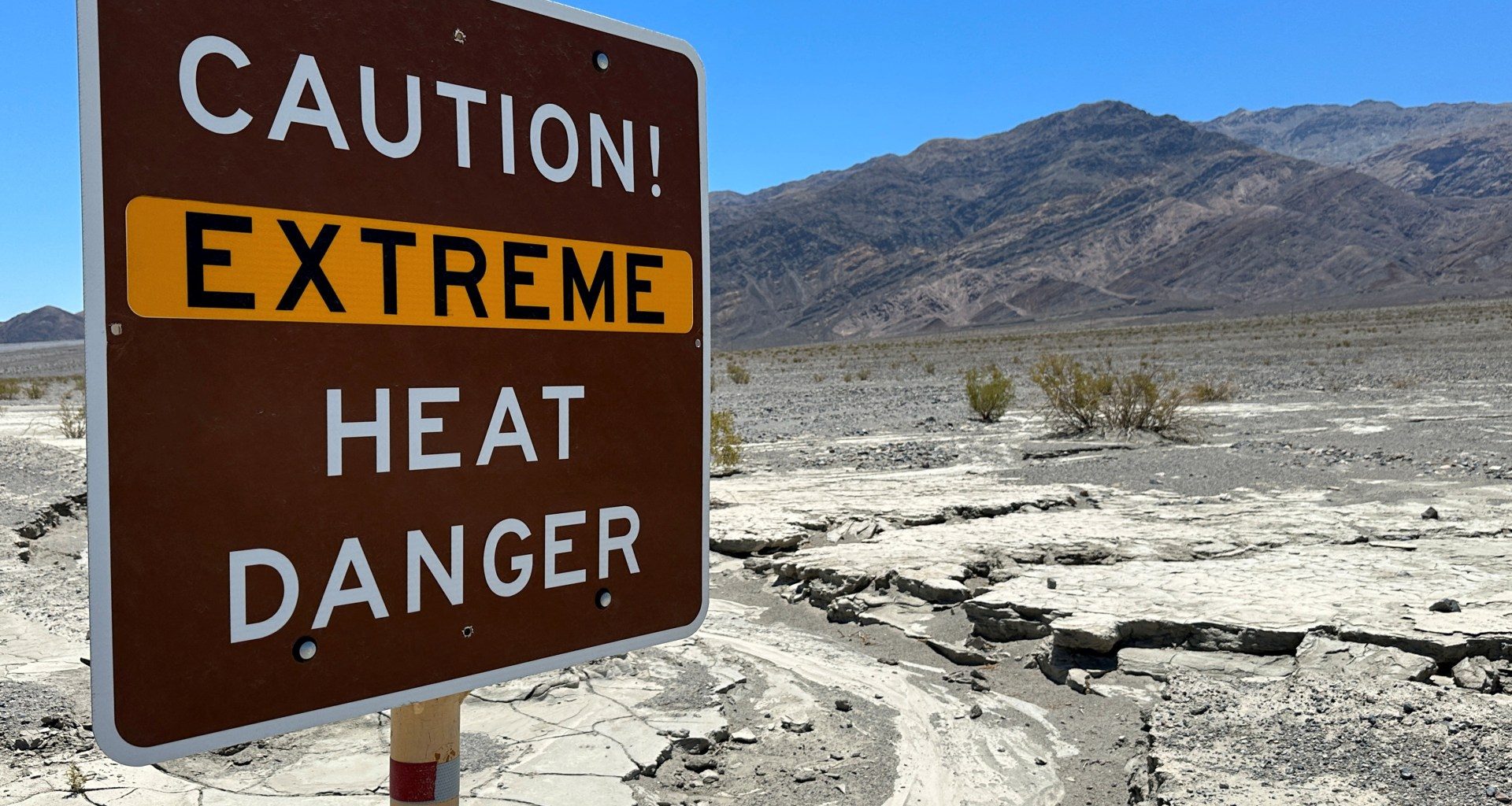
Twenty million people dead in a heatwave, some poached alive in a lake they hoped to cool off in.
It is, for now, science fiction.
Kim Stanley Robinson’s apocalyptic novel, Ministry for the Future, starts in an Indian town where many have not survived a summer night. By day, the survivors are choked with the fumes of generators powering air conditioners. The air is “like breathing through the exhaust pipe of an old bus”, he writes.
We’re not there, yet. But extreme heat, far less visually dramatic than hurricanes or floods, is claiming lives and livelihoods with a stealth that belies its impact. Climate change is dramatically increasing the probability that we will see a mass fatality extreme heat disaster soon.
Extreme heat is not only an issue in the Northern Hemisphere from June to September. As I write, in March, there’s an unprecedented closure of schools across South Sudan. It’s due not to conflict or economic woes but an extraordinary surge in temperatures to more than 42 degrees Celsius (108 degrees Fahrenheit). Parts of South America and Australia are just emerging from their two hottest summers ever. Worldwide, 2023 was the hottest on record – by a huge margin. Half the world’s people – 3.8 billion in fact – simmered under extreme heat for at least one day last year.
Heatwaves across Europe killed more than 60,000 people in 2022. In the United Kingdom, roads melted and almost 3,000 people died. India sees at least 1,000 deaths a year attributable to extreme heat. In the United States, the number is similar. Extreme heat there kills more people than floods and tornadoes combined. According to The Lancet medical journal, China is on track to see from 20,000 to 80,000 heatwave deaths a year.
And all these figures are, in fact, probably gross underestimates. Unlike deaths in floods, most of those during heatwaves are recorded as something medical. Extreme heat is the silent assassin of climate change.
It’s to expose this and propose solutions that the inaugural Global Summit on Extreme Heat is convening this week. Jointly hosted by my organisation, the International Federation of Red Cross and Red Crescent Societies, and by the US Agency for International Development, the online forum will bring together thinkers and doers. Because there’s a lot to think about. And even more to do.
Climate change, of course, exacerbates extreme heat. World Weather Attribution reports like a recent one about heat in southern West Africa show – near unequivocally – that heatwaves are much more frequent and hotter because of a generally warmer world. This underscores the need to mitigate emissions. But no amount of action now will stop heatwaves in our lifetimes. What we can do is cope better when they hit by preparing before they do.
How?
First, by focusing on the most vulnerable. Heatwaves have a disproportionate impact on those in cities, where heat is often trapped, and on those without the means to escape either literally or into air-conditioned cocoons. Cities need plans. City planners increasingly recognise this. Two-thirds of those who responded to a survey by The Lancet said they were concerned about climate change impacting public health. Extreme heat was the most frequently identified hazard, named by 72 percent of respondents. Heat action plans identify vulnerable groups and “heat island” or “hot spot” areas. They identify triggers for action and warnings and assign clear roles and responsibilities. They test innovative but simple solutions like shades over crowded outdoor areas such as markets and tree planting within informal settlements. Freetown in Sierra Leone recently launched its plan. I’m delighted Freetown’s mayor will be speaking at the summit.
Red Cross and Red Crescent Societies often help with such plans. Kenya’s Red Cross, for example, has worked with scientists, researchers, city authorities and community leaders to map out areas of highest heat risk in Nairobi’s informal settlements. Red Cross and Red Crescent Societies have done similar studies in Cape Town, Hanoi, Mexico City and Dhaka.
Second, by prioritising early warnings and early actions. Turning science and forecasts into accessible information saves lives. People warned in advance make better decisions and take better actions. That can be through media but also through telephone calls to people registered as vulnerable months ahead of time – Australia’s Telecross RED is one example. Anticipatory action – moving those who can move, for example, or putting temporary cooling infrastructure in place – also saves lives. In Hanoi, before a recent heatwave, volunteers with Vietnam’s Red Cross positioned mobile cooling centres near areas where street vendors and motorcycle riders gathered. Spain rosters more lifeguards on beaches on days projected to be the hottest, knowing that it’s on them that the least experienced swimmers venture into the sea.
Third, by putting power in the hands of those on the ground. Local people know their communities best. Fellow residents trust them. Skills and resources can be shared quickly and efficiently. Fatema Khatun and Sayma Khatun Bithi are two of many Red Crescent volunteers in Bangladesh who teach first-aid skills, including how to help someone who falls unconscious due to overheating.
Above all, though, addressing extreme heat starts with highlighting the problem. At this week’s global summit, we’ll be announcing a two-month campaign of action on extreme heat ahead of Heat Action Day itself on June 2. We’ll be launching an online toolkit to help guide people with what they can do to spread knowledge and prepare for the Northern Hemisphere’s summer, which for many has already begun.
Science fiction is deliberately scary. Reality need not be. With the right anticipation and action, the worst scenarios can remain in the realm of the imagination.
The views expressed in this article are the author’s own and do not necessarily reflect Al Jazeera’s editorial stance.
Read More: World News | Entertainment News | Celeb News
Aljazera










